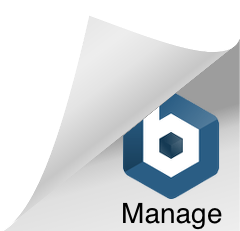
Peer Pressure

Best practices from higher education leaders
Higher education leaders face lots of challenges—from shifting enrollment trends to technological disruptions and the need for innovative student support. Success requires forward-thinking strategies and adaptable solutions. Elite leaders are forging a path forward and finding innovative ways to drive change and implement creative approaches. To get a peek into some of the roadmaps institutions are using, we sat down with Minita Ramirez, Ph.D., President, Laredo College; Michael Cioce, Ed. D., President, Rowan College at Burlington County; Steve Stoute, J.D., President, Canisius University.
What do you see as the most pressing challenge currently facing higher education, and how is your institution addressing it?
Minita Ramirez: Higher education is changing rapidly, presenting several challenges, including keeping up with technology, managing elected boards with highly diverse expectations, navigating political influences, addressing the ambiguity surrounding the future of the Department of Education, maintaining accreditation, meeting the often conflicting expectations of state and federal agencies, adapting to changing demographics, and responding to immigration concerns.
The underlying issue is always budgets and funding. Keeping taxes, tuition and fees down is difficult while trying to grow. On any given day, any of these take center stage and shift the focus. The way to tackle all of this is staying true to our mission and vision, and keeping our strategic plan as the foundation for our decision-making process.
Michael Cioce: Convincing students and their families of the return on their college investment. In recent years, we’ve focused on the data that 95% of our graduates successfully start their career or serve in the military within one year. RCBC grads who are in a career have a starting salary of $64,000, which is 6% higher than the national average. But that’s a tough argument to an instant-gratification society when Walmart pays truck drivers $100,000 as a starting salary.
In the longer term, we offer several career pathways that combine credit and noncredit certificates that allow learners to build upon past success and continue their momentum through their careers and scholarly pursuits. We also need to ensure that our offerings meet students where they are in terms of days, times and courses we offer. Too often, institutions roll out the same schedule year after year without paying attention to the needs of modern students. We are slowly but surely breaking that cycle.
Steve Stoute: Most pressing is the need for transformative change to meet the evolving requirements of today’s students, from a curricular, technological and experiential perspective. That type of change is in many ways radical for higher education because of the nature of our institutions and the traditions we submit to abidingly.
At Canisius, we clearly articulate why change is necessary, envisioning what change is possible in our context, and seeking to make changes in ways we believe have the most immediate impact on our students.
Can you share a specific strategy or initiative that has significantly impacted student success or engagement at your institution?
Ramirez: First, we are shifting mindsets and creating a culture of students first. While we’ve made progress, we may still have people who want to make decisions beneficial to employees and faculty before the students.
Secondly, we are trying to attract students back to campus. So, we created the Student Life department and added some student services on campus. As a commuter college, students tend to rush in to take a class, take online classes, and work full-time. Over the last two years, however, there has been more activity, including a Student Government Association, that is active and working with all students.
Cioce: No single initiative has reshaped us as dramatically as 3+1. In partnership with Rowan University, students complete 75% (three years) of their baccalaureate credits at our community college tuition with our faculty before completing 25% (plus one year) with our faculty at their discounted tuition rate.
3+1 allows students to earn both an associate and bachelor’s degree for less total tuition than what most universities charge for a single year. Since becoming the first New Jersey community college to offer junior-year courses in 2017, about 1,500 students have earned their associate and bachelor’s degrees, saving $36 million in tuition through this initiative. Incredibly, once students hit their junior year, their retention rate exceeds 90%.
The 3+1 program has sparked student success and accessibility and generated new enrollment and revenue streams for our college at a time when there are fewer traditional-aged college students. This path is available in 13 high-employment majors such as nursing, inclusive education, and data analytics.
Stoute: We have leveraged a platform that allows us to gamify student engagement. We have found that our students enjoy the competitive aspect of earning and accumulating points for participating in activities and tracking progress throughout the semester. The data suggests that student engagement is up significantly since we implemented the new system.
We also now have the ability to better understand, based on the data, what programs are most appealing to students, which helps us determine best how to plan new programs, i.e., who, what, when, where and how.
“We have leveraged a platform that allows us to gamify student engagement. We have found that our students enjoy the competitive aspect of earning and accumulating points for participating in activities and tracking progress throughout the semester.”
— Steve Stoute, J.D., President, Canisius University
How has your leadership approach evolved to navigate the complexities of technological advancements in higher education?
Ramirez: I endeavor to become a leader of change. Fortunately, I have strong support from the Board of Trustees, and they have funded the projects we wanted to champion. The good news is that the change, while painful for some, is still not evolving. We have made great progress with our move to Banner SaaS and are still pushing to get everyone and everything to work smarter and not harder.
Cioce: I have always encouraged my staff to anticipate and stay ahead of the next innovation to find solutions that will help students learn, and faculty and staff do their jobs more effectively. During the pandemic, there was lots of panic about converting courses to online format. But we were ready because we had prepared online versions of all courses as part of our contingency planning from the avian flu scare a few years prior.
The Information Technology and Distance Learning teams were prepared to use their technology to overcome the crisis’s challenges. While we should not treat everything like a crisis, we need to question everything we do and seek better tools to empower students, faculty and staff.
“I have always encouraged my staff to anticipate and stay ahead of the next innovation to find solutions that will help students learn, and faculty and staff do their jobs more effectively.”
— Michael Cioce, Ed. D., President, Rowan College (RCB) at Burlington County
Stoute: Our approach is consistently about empowering others to achieve their fullest potential. If anything, the evolution of leadership has been the willingness to leverage technology to facilitate the work of our team. Utilizing technology to be more inclusive with data and more strategic in our focus has allowed us to improve our decision-making and be more efficient in our execution of initiatives.
What role does collaboration with other institutions or community stakeholders play in tackling shared challenges in the industry?
Ramirez: In Texas, we have the Texas Association of Community Colleges, which brings all CEOs and Chancellors of CCs together for regular meetings every quarter. We have committees that work with legislators—the Texas Higher Education Coordinating Board—and stay connected to what is happening in Washington. The information is critical and the friendships among the presidents is paramount. Each of us is a phone call away and always ready to help.
Cioce: Community stakeholders are critical in helping us fill labor gap shortages in specific industries. We have advisory groups for every sector and discipline we offer. One recent success story was initiated by Deborah Heart and Lung Center, whose CEO noted that the hospital had a dire need for pharmacy technicians and phlebotomy technicians. He wanted the hospital to pay for non-clinical staff, such as custodians and cafeteria workers already vested in the organization, to train in these fields.
The goal would be to upgrade their skills and place them in higher-paying career tracks in the healthcare field. We offered the courses at Deborah, which offered two benefits: These workers could take the classes where they work and could learn in professional environments. It’s an excellent model of stakeholder partnerships tackling industry challenges.
Stoute: I believe collaboration will be critically important for higher education institutions to thrive in the future. The successful institutions will be able to leverage strategic relationships and partnerships across the enterprise to deliver greater value and better outcomes for students.
Whether the collaboration takes the form of dual-enrollment courses with high schools, seamless transfer between two-year and four-year institutions, experiential learning opportunities (internships or real-world case studies) through local businesses or shared services for IT systems, the path forward is more navigable if we work together.
What advice would you give to emerging leaders in higher education who are looking to drive innovation and overcome barriers in their roles?
Ramirez: Stay true to your beliefs, but don’t be afraid to listen to what others have to say. Each of us come with certain beliefs and mindsets that help us focus on our priorities as leaders. These priorities have a way of getting modified by attempting to meet all the needs and wants of students, faculty, staff, community, business and industry, legislators, trustees and local leaders. What cannot change is the fundamental belief that education is the world’s equalizer.
Through education, we can help individuals find better solutions to their problems and move forward in their lives and careers. Learn from everyone, even if it is how not to do something. There are stronger lessons in those who we have worked with and for that have made serious mistakes. Change is inevitable. Think into the future and know that today’s best decisions will in a short time have to be changed, modified or scrapped all together. Don’t be offended; it is not personal.
“Through education, we can help individuals find better solutions to their problems and move forward in their lives and careers. Learn from everyone, even if it is how not to do something.”
— Minita Ramirez, Ph.D., President, Laredo College
Cioce: Don’t overlook customer service. There’s nothing bigger than the little things. Make people—customers and colleagues—feel special. Make them want to be part of your community beyond transactional business. Value all levels of employees, and then suddenly, you will notice innovation replaces those barriers.
Challenge the status quo. Treat every process as an opportunity for improvement. Always question whether you’re doing things most effectively. You will often discover that the answer was not as complicated as you thought; you just hadn’t taken the time to ask the right question. Finally, stick to your core message and values. Consistency and honesty will see you through tough times.
Stoute: Resilience is key, both from a personal and an organizational perspective. Colleges and universities, regardless of the size, are complex entities. Innovating in that space requires leaders that are discouraged by setbacks, failures or resistance.
In my experience, it has proved slightly less complicated to drive innovation at institutions that are resilient, in that the organizational culture is one that rewards creativity and experimentation by incentivizing those activities, but also by protecting the people who undertake them. No person, regardless of their role or position on campus, can drive innovation if the culture of the institution is not conducive and welcoming to new ideas. Leaders at every level in higher education today must have clarity of purpose and a firm resolve to achieve the necessary outcomes, because the barriers are there and it is unlikely that they are overcome at the first attempt.


